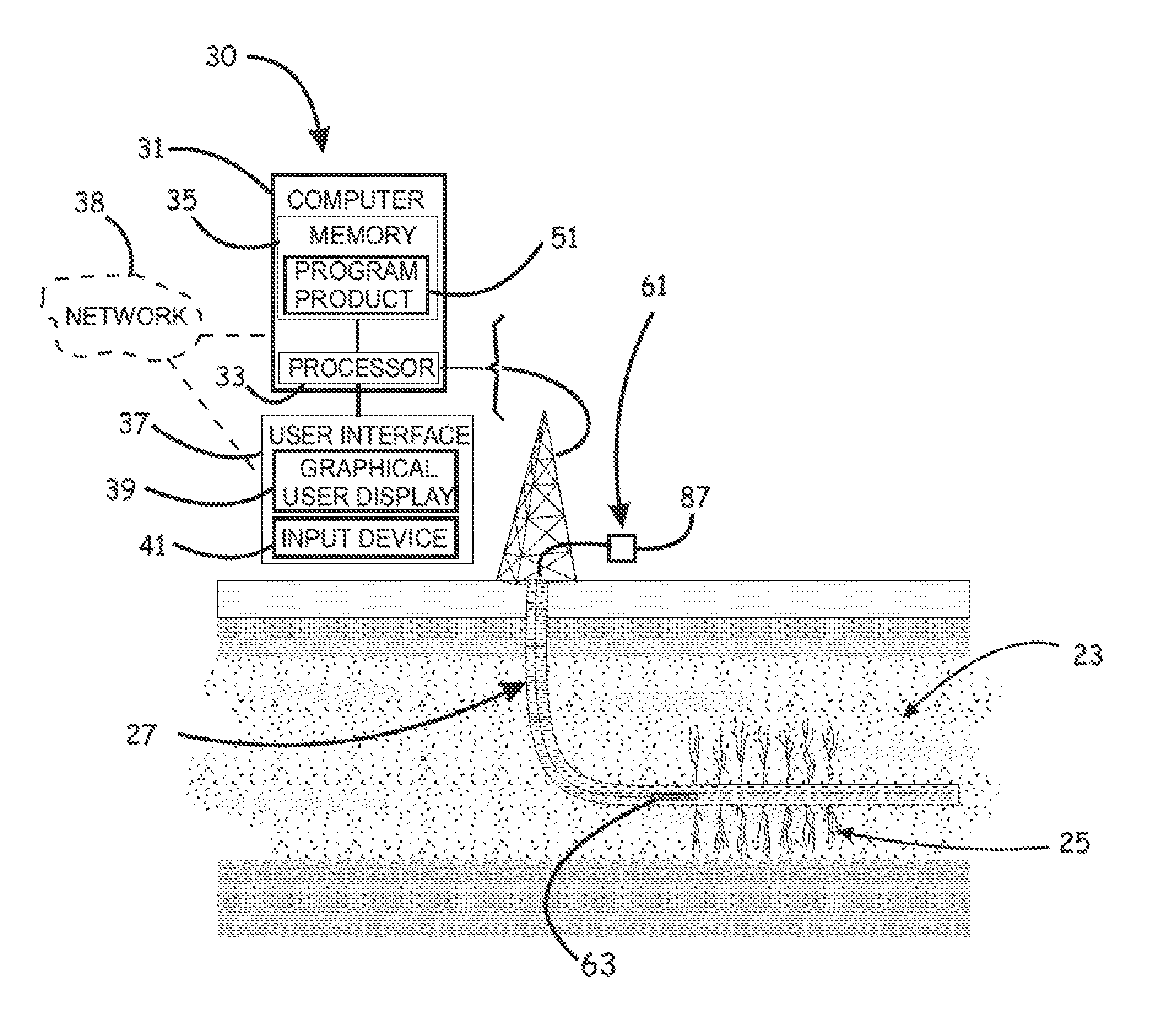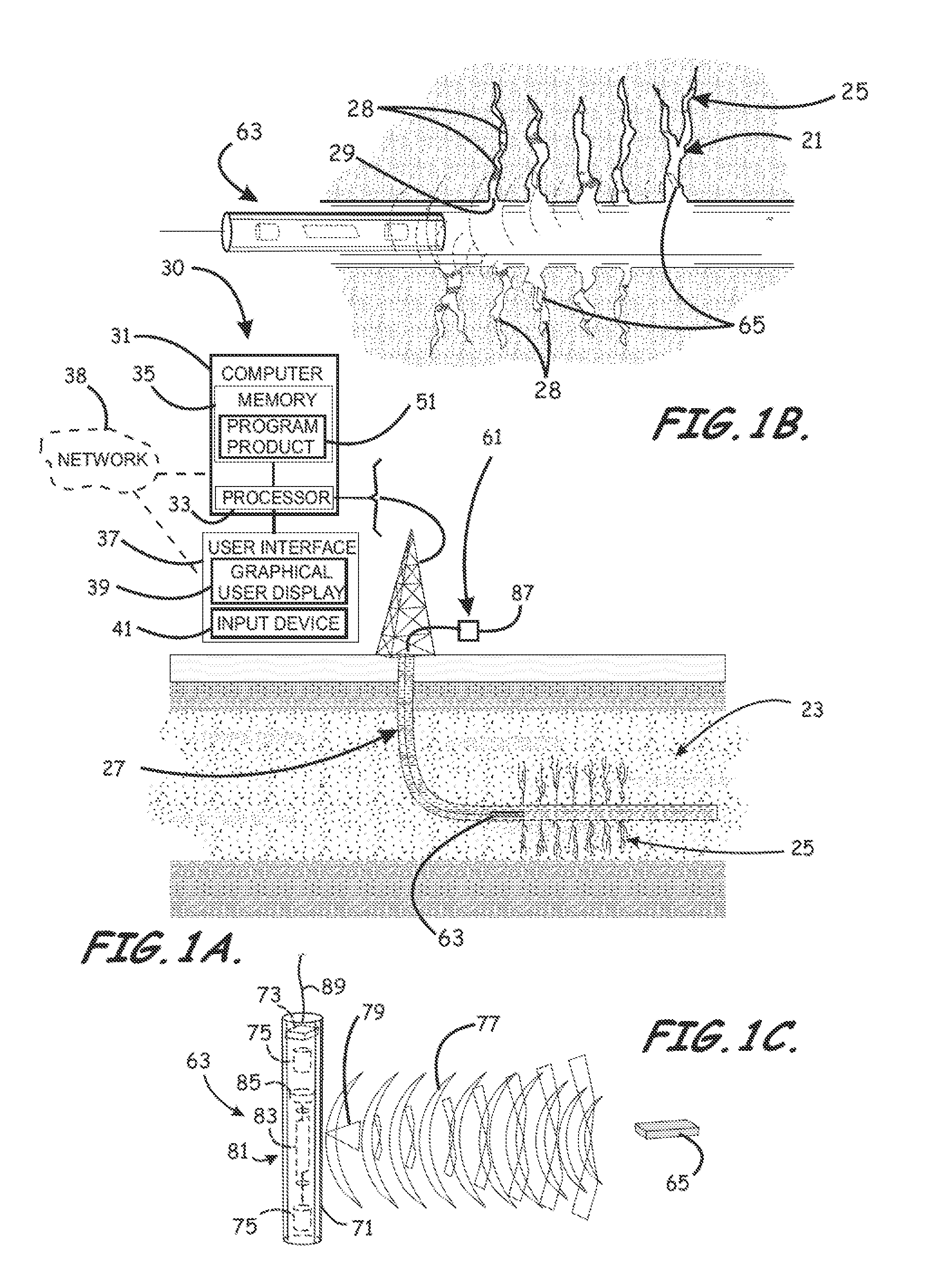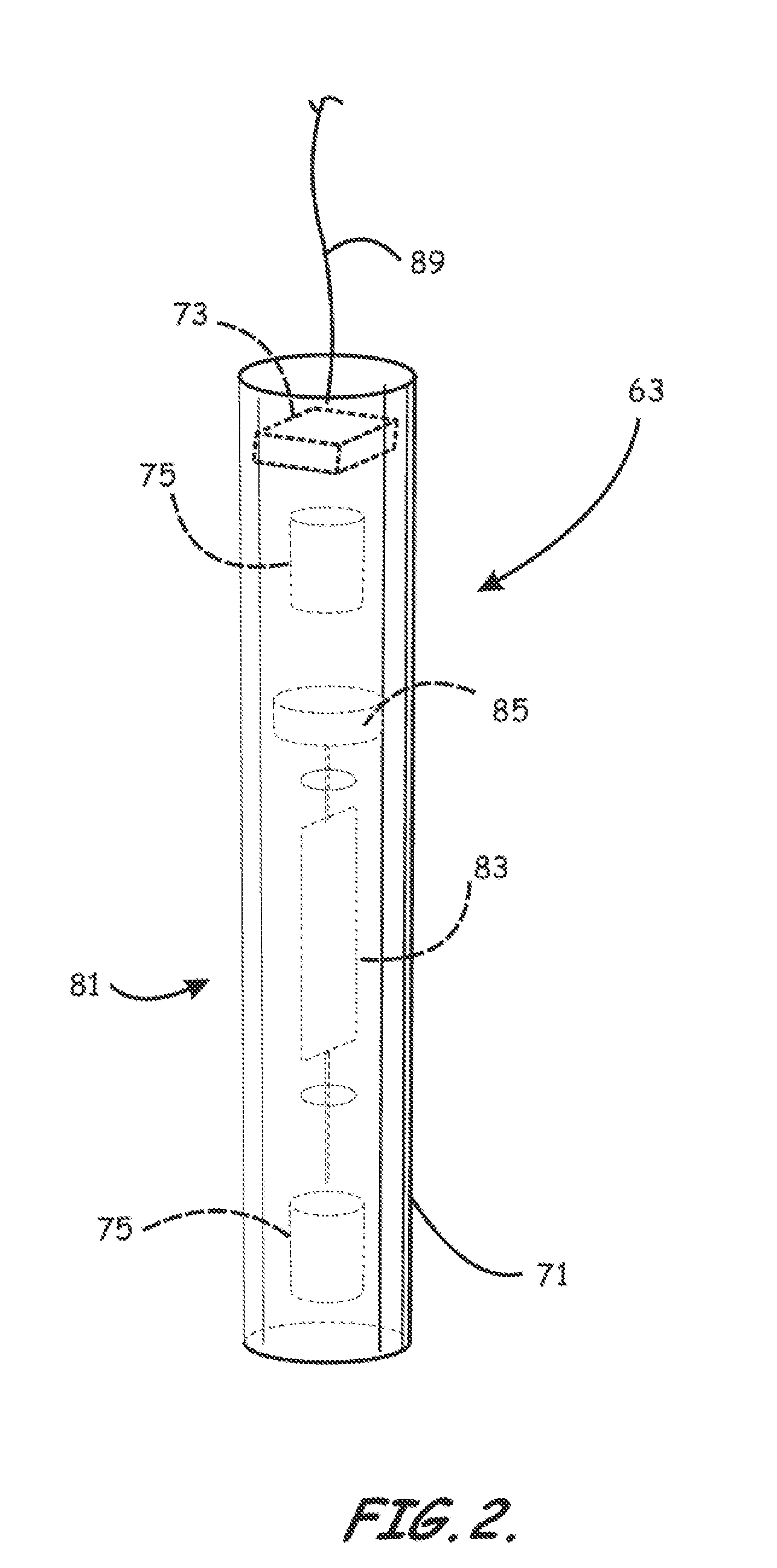Hybrid Transponder System For Long-Range Sensing and 3D Localization
a transponder system and long-range sensing technology, applied in the field of hydrocarbon production, can solve the problems of difficult to determine the size and orientation of completed hydraulic fractures, inability to meet the requirements of the system, so as to enhance the optimal performance of the overall system, and avoid adversely affecting the overall dimension
- Summary
- Abstract
- Description
- Claims
- Application Information
AI Technical Summary
Benefits of technology
Problems solved by technology
Method used
Image
Examples
Embodiment Construction
[0032]The present invention will now be described more fully hereinafter with reference to the accompanying drawings, which illustrate embodiments of the invention. This invention may, however, be embodied in many different forms and should not be construed as limited to the illustrated embodiments set forth herein. Rather, these embodiments are provided so that this disclosure will be thorough and complete, and will fully convey the scope of the invention to those skilled in the art. Like numbers refer to like elements throughout. Prime notation, if used, indicates similar elements in alternative embodiments.
[0033]Various embodiments of the present invention relate to the use of the principles of radio-frequency identification (RFID) technology to map the shape of hydraulic fractures. The position of one or more transponders can be localized in three dimensions relative to a reader installed in a wellbore. The transponders are carried along in a fluid injected into the hydraulic fr...
PUM
 Login to View More
Login to View More Abstract
Description
Claims
Application Information
 Login to View More
Login to View More - R&D
- Intellectual Property
- Life Sciences
- Materials
- Tech Scout
- Unparalleled Data Quality
- Higher Quality Content
- 60% Fewer Hallucinations
Browse by: Latest US Patents, China's latest patents, Technical Efficacy Thesaurus, Application Domain, Technology Topic, Popular Technical Reports.
© 2025 PatSnap. All rights reserved.Legal|Privacy policy|Modern Slavery Act Transparency Statement|Sitemap|About US| Contact US: help@patsnap.com



